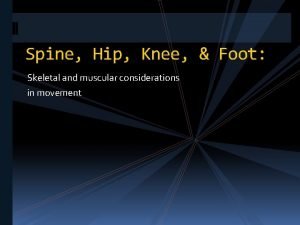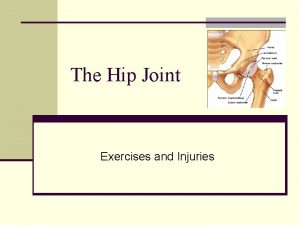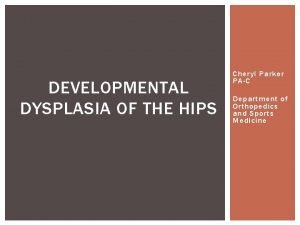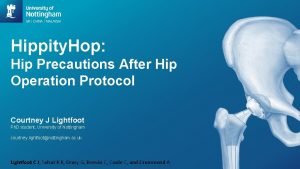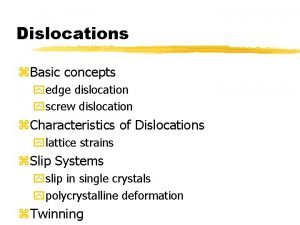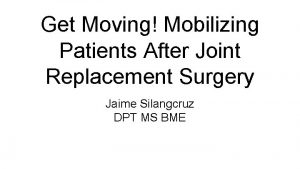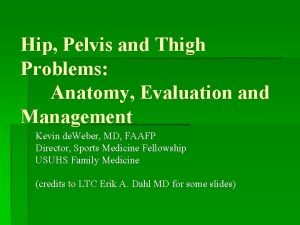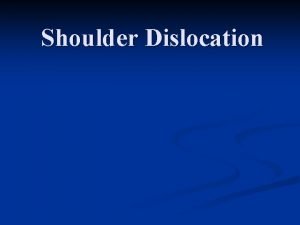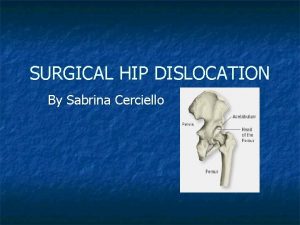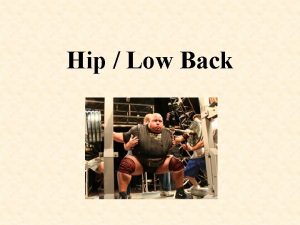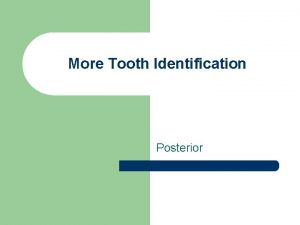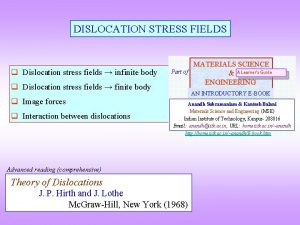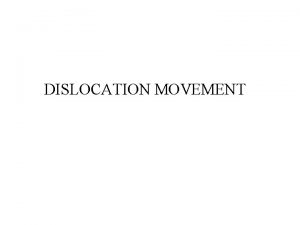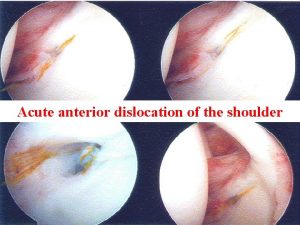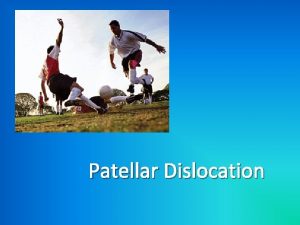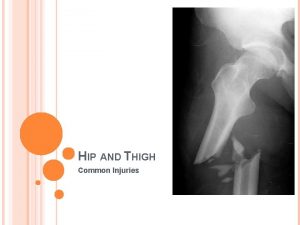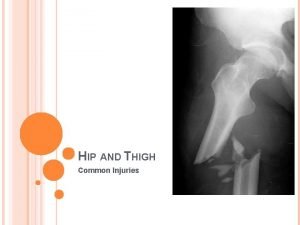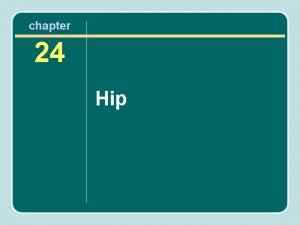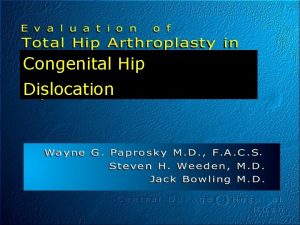HIP DISLOCATION Dr Niyaz Posterior Dislocation More common


















- Slides: 18

HIP DISLOCATION Dr. Niyaz

Posterior Dislocation • More common than anterior • RTA , fall from height

Mechanism of injury • Someone seated in a car without fastening seatbelt……in an event of a crash , ……………. . the knee joint strikes the dashboard, …… hip flexes and adducts and ………………dislocates with or without fracture of acetabulum

Attitude • • Flexed Adducted Shortened Internal rotated

Associated injuries • • Fracture of acetabulum Fracture head or neck of femur Shaft of femur Fracture patella or around knee

investigations • Xray pelvis with both hips • CT scan • USG pelvis and abdomen

treatment • Emergency closed / open reduction

complications Early • Sciatic nerve injury • Vascular injury • Femoral shaft fractures

Complications- late • • Avascular necrosis Myositis ossificans Unreduced dislocation osteoarthritis

Anterior dislocation • Rare compared to posterior • Occurs when weight falls on the back of a miner or building labourer • RTA / air crash

Anterior dislocation


Clinical feature • Leg lies abducted, flexed and externally rotated • Femoral head is palpated anteriorly • Two types: -superior type and inferior type

investigation • Xray- ap and lateral view • If any doubt – CT scan

treatment • Longitudinal traction with gradual flexion • Assistant applies lateral pressure to the medial thigh

Central dislocation • Caused by a fall on the side or a blow over the greater trochanter • Causes fracture of acetabular floor

Central dislocation

Thank you
 More more more i want more more more more we praise you
More more more i want more more more more we praise you More more more i want more more more more we praise you
More more more i want more more more more we praise you Dislocation glide vs climb
Dislocation glide vs climb Coxa valga angle
Coxa valga angle Bo jackson hip dislocation
Bo jackson hip dislocation Galeazzi sign
Galeazzi sign Hip hop hip to the hippity
Hip hop hip to the hippity The hip to the hop to the hippity hop
The hip to the hop to the hippity hop Posterior dislocation
Posterior dislocation Knee replacement surgery cost
Knee replacement surgery cost Most common hip fracture
Most common hip fracture 5 apples in a basket riddle
5 apples in a basket riddle More love to thee o lord
More love to thee o lord The more you study the more you learn
The more you study the more you learn More choices more chances
More choices more chances Aspire not to
Aspire not to Human history becomes more and more a race
Human history becomes more and more a race Knowing more remembering more
Knowing more remembering more Newton first law examples
Newton first law examples



